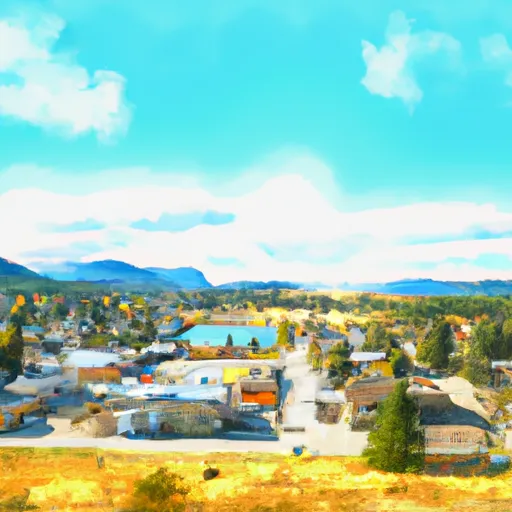-
 Snoflo Premium
Snoflo Premium
Get unlimited access to all our content
With no Ad interruptions! - Start Your Free Trial Login with existing account
Noxon
Eden Index
Climate
8.2
•
Recreation
6.1
•
Community
2.4
•
Safeguard
6.0/10

Located in Sanders County, Montana, Noxon is a small town surrounded by breathtaking natural beauty. The climate in Noxon is characterized by cold winters and mild summers, making it an ideal destination for outdoor enthusiasts. The town is nestled near the Clark Fork River, which provides ample hydrological opportunities for fishing, boating, and kayaking. Additionally, Noxon Reservoir, created by the construction of Noxon Rapids Dam, offers further recreational activities such as swimming and water sports. With its proximity to the Cabinet Mountains and Kootenai National Forest, Noxon also provides excellent opportunities for hiking, camping, and wildlife viewing. Whether you are seeking water-based adventures or exploring the great outdoors, Noxon offers a diverse range of recreational opportunities amidst its scenic landscapes.
What is the Eden Index?
The Snoflo Eden Index serves as a comprehensive rating system for regions, evaluating their desirability through a holistic assessment of climate health, outdoor recreation opportunities, and natural disaster risk, acknowledging the profound impact of these factors on livability and well-being.
Climate Health Indicator (CHI): 8.2
Noxon receives approximately
1017mm of rain per year,
with humidity levels near 68%
and air temperatures averaging around
7°C.
Noxon has a plant hardyness factor of
6, meaning
plants and agriculture in this region thrive during a short period during spring and early summer. Most
plants will die off during the colder winter months.
By considering the ideal temperature range, reliable water supplies, clean air, and stable seasonal rain or snowpacks, the Climate Health Indicator (CHI) underscores the significance of a healthy climate as the foundation for quality living.
A healthy climate is paramount for ensuring a high quality of life and livability in a region, fostering both physical well-being and environmental harmony. This can be characterized by ideal temperatures, reliable access to water supplies, clean air, and consistent seasonal rain or snowpacks.
Weather Forecast
Streamflow Conditions
Pend Oreille
Area Rivers
Pend Oreille
Snowpack Depths
Pend Oreille
Reservoir Storage Capacity
Pend Oreille
Groundwater Levels
Recreational Opportunity Index (ROI): 6.1
The Recreational Opportunity Index (ROI) recognizes the value of outdoor recreational options, such as parks, hiking trails, camping sites, and fishing spots, while acknowledging that climate plays a pivotal role in ensuring the comfort and consistency of these experiences.
Access to outdoor recreational opportunities, encompassing activities such as parks, hiking, camping, and fishing, is crucial for overall well-being, and the climate plays a pivotal role in enabling and enhancing these experiences, ensuring that individuals can engage in nature-based activities comfortably and consistently.
Camping Areas
| Campground | Campsites | Reservations | Toilets | Showers | Elevation |
|---|---|---|---|---|---|
| Marten Creek | 17 | 2,385 ft | |||
| Dorr Skeels | 7 | 2,327 ft | |||
| Big Eddy | 34 | 2,218 ft | |||
| Devils Elbow | 42 | 2,611 ft | |||
| Kit Price | 53 | 2,550 ft | |||
| Bad Medicine | 17 | 2,346 ft | |||
| North Shore | 13 | 2,358 ft | |||
| Spar Lake | 14 | 3,327 ft | |||
| Bull River | 28 | 2,192 ft | |||
| Berlin Flat | 9 | 2,811 ft |
Nearby Fishing
Nearby Ski Areas
Catastrophe Safeguard Index (CSI):
The Catastrophe Safeguard Index (CSI) recognizes that natural disaster risk, encompassing floods, fires, hurricanes, and tornadoes, can drastically affect safety and the overall appeal of an area.
The level of natural disaster risk in a region significantly affects safety and the overall livability, with climate change amplifying these risks by potentially increasing the frequency and intensity of events like floods, fires, hurricanes, and tornadoes, thereby posing substantial challenges to community resilience and well-being.
Community Resilience Indicator (CRI): 2.4
The Community Resilience Indicator (CRI) recognizes that education, healthcare, and socioeconomics are crucial to the well-being of a region. The CRI acknowledges the profound impact of these elements on residents' overall quality of life. By evaluating educational resources, healthcare accessibility, and economic inclusivity, the index captures the essential aspects that contribute to a thriving community, fostering resident satisfaction, equity, and social cohesion.

